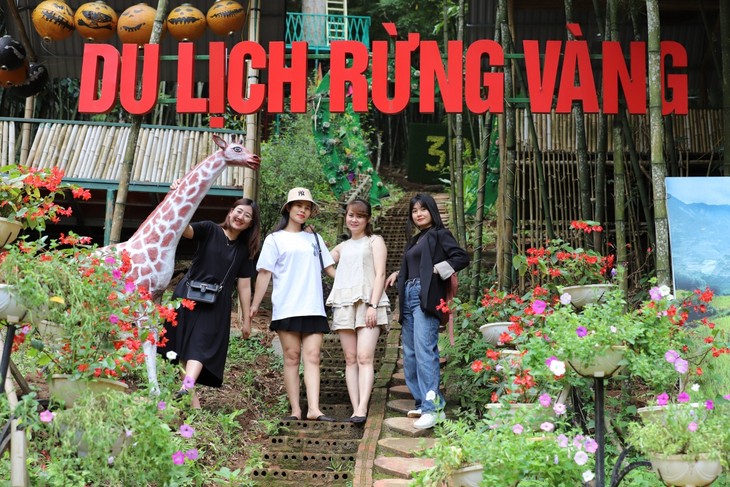(VOVWORLD) - Combining agriculture and tourism activities has economically benefited many farming households in the northern mountainous province of Son La over recent years. The direct participation of farmers has made tourism products more diverse and attractive, allowed tourists to experience the daily activities of the locals, and given farmers a stable income.
 Maburu Farm strawberry garden. Maburu Farm strawberry garden.
|
Every weekend, the Maburu Farm strawberry garden of the Na Lun Moc Chau Tourism and Agriculture Technology Cooperative welcomes a large number of tourists, who closely observe farming in accordance with VietGAP standards, enjoy ripe, succulent strawberries right in the garden, and take some home as a gift.
According to Deputy Director Ngo Minh Hieu, the Cooperative attracted thousands of tourists right away in 2019 when it piloted a model to grow strawberries on 6,000 square meters and combine it with tourism.
The early success has encouraged the Cooperative to expand the area to 2 hectares and integrated strawberry farming and tourism more professionally. The strawberries are now grown in the ground rather than in green houses, Hieu said.
“Our strawberry garden is different from others’ because it’s planted in accordance with organic standards. We want to increase crop productivity and move toward safe, quality products so that visitors won’t forget Moc Chau tourism,” said Hieu.
 Rung Vang ecotourism site is located in Noong Duc hamlet, Son La city. (Photo: VOV) Rung Vang ecotourism site is located in Noong Duc hamlet, Son La city. (Photo: VOV)
|
The Rung Vang ecotourism site in Noong Duc hamlet has preserved and promoted the culture of the local Thai ethnic community by making full use of the potential of the forest.
Stilt houses, trails through the forest, rest huts made from environment-friendly materials, and art troupes have been created to give visitors a taste of local life, said Tran Thi Gam, the site’s Director.
“We’re making the most of the forest environment, which is very cool and fresh, to create tourism products that stand out from other tourist sites. First, we’ve arranged for the hamlet’s art troupe to perform for tourists. Second, we’re planting banyan trees and native plants of various kinds for tourists to photograph. We feel good about agri-tourism because the number of visitors is increasing day by day,” said Gam.
Through the one commune one product (OCOP) program, Son La has gotten the Ngoc Chien tourist site in Muong La district and the Pha Din site in Thuan Chau district recognized as 4-star tourism products.
Bui Khac Bao, head of the Tourism Management Section of the provincial Culture, Sports and Tourism Department, said, “Ecotourism has a close link with agriculture. Tourists, through the community-based tourism model, can visit and enjoy the local cuisine in which local agricultural products are used.”
Bao took tourist areas like Moc Chau Happy Land as an example, adding that they must rely on local farm produce and flowers to develop tourism. Some ecological models in Son La have combined agriculture from the very beginning.
Ha Nhu Hue, Director of the provincial Department of Agriculture and Rural Development, said Son La’s agriculture sector is combining specialty products with tourism.
According to Hue, “There is a trend toward experiential tourism, so we have set up inter-regional agricultural production areas and mobilized local people to participate in a model which large businesses will sponsor and direct. The locals can operate tours for the sponsoring businesses and cooperatives. In that way, local people will gradually change their thinking about production."
The integrated agriculture-tourism model is having some success in Son La. It is providing farmers stable income, so the Son La administration is continuing to connect localities and travel companies to create more agro-tourism destinations.